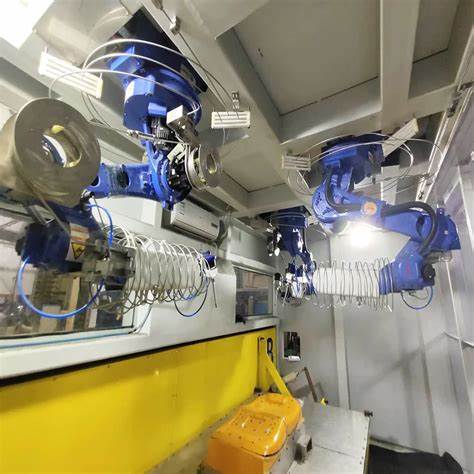News
The influence of abrasive supply system of water jet cutting machine on cutting characteristics
The flow rate and stability control of abrasive supply in the waterjet processing system is a key factor in improving the overall performance of its processing system. Abrasive Water Jet mainly uses the high-speed flow of water jet in the nozzle to form a certain pressure difference between the water nozzle and the abrasive nozzle, so as to use vacuum suction and the weight of the abrasive to suck the abrasive to complete the mixing of abrasive and water.
Usually the abrasive is stored in the abrasive tank located on the system. When the control valve is opened, the abrasive enters the jet system along the hose. In particular, the position of entering the system can be divided into pre-mixing and post-mixing.
The role of abrasive in the cutting process

The role of abrasive jet in the cutting process: Abrasive water jet is a cutting method with high-pressure water as the carrier and abrasive as the core. Because the abrasive mass is larger than water and has edges and corners, the abrasive is accelerated by the high-pressure water jet, and its cutting ability on the material is much greater than that of pure water jet under the same conditions.
In fact, when the cutting fluid is ejected from the nozzle, it is in a turbulent state. The abrasive particles randomly take cutting directions in the cutting fluid, and the impact angle on the material is arbitrary. When the abrasive impacts the material at an acute angle, it is similar to a semi-infinite body in space being subjected to a normal concentrated impact load. When the abrasive impacts the material at an obtuse angle, it is similar to a semi-infinite body in space being subjected to a normal spherical concentrated impact load. Both impacts will produce tensile stress around the load contact area and maximum shear stress at a certain depth directly below the load. When the abrasive incident speed exceeds the threshold limit of the material, radial or transverse brittle cracks (or plastic rheology) will be generated at defects within the abrasive impact range. At this time, a large amount of material peeling generally does not occur. With the continuous abrasive impact, it plays a continuous loading role, which promotes the initiation of new cracks and the expansion of old cracks. At the same time, after the crack is formed, high-pressure water enters the crack space, and under the action of the water wedge, tensile stress concentration is generated at the crack tip, which promotes the rapid expansion of the crack, causing the initiation, expansion and intersection of the material cracks, and then a large amount of peeling, completing the cutting of the material.
In addition, the abrasive is discontinuous in the water jet, and the high-speed particle flow composed of abrasive particles produces a high-frequency impact on the cut material, which greatly improves the cutting ability of the abrasive water jet.
The influence of abrasive parameters on cutting performance
Usually, the requirements for abrasives for cutting different materials are also different. Abrasives with large particle sizes are suitable for cutting softer materials such as aluminum and plastic. Abrasives with small particle sizes are suitable for cutting harder materials such as steel.
The influence of abrasive type on cutting depth: Hardness is the key indicator of abrasive cutting ability. In the process of cutting materials, the greater the hardness of the abrasive, the deeper the cutting depth. This is because the main form of destruction of abrasive jet cutting materials is erosion cutting. Under the condition of constant pressure and constant flow rate of abrasive, the higher the hardness of abrasive, the higher its strength and the stronger its erosion ability.
Under normal circumstances, the total impact force F2 of abrasive on the material to be cut is related to the number of abrasive contact materials per unit area. When the abrasive particle size decreases, the impact force Fm increases, the number of contacts per unit area increases, the destructive ability increases, and the cutting depth increases. However, if the mesh size of the abrasive is too small, it cannot form an effective energy transfer process, but will reduce the cutting ability of the system.
Two-phase mixing of water jet: Abrasive water jet mainly mixes low-speed abrasive with high-speed flowing water jet, so that the low-speed abrasive also obtains high-speed kinetic energy and is ejected together with high-speed water to form an abrasive water jet. When abrasive particles enter the mixing tube, due to the speed difference between the abrasive and the water flow, the abrasive will be accelerated until the speed is balanced.





